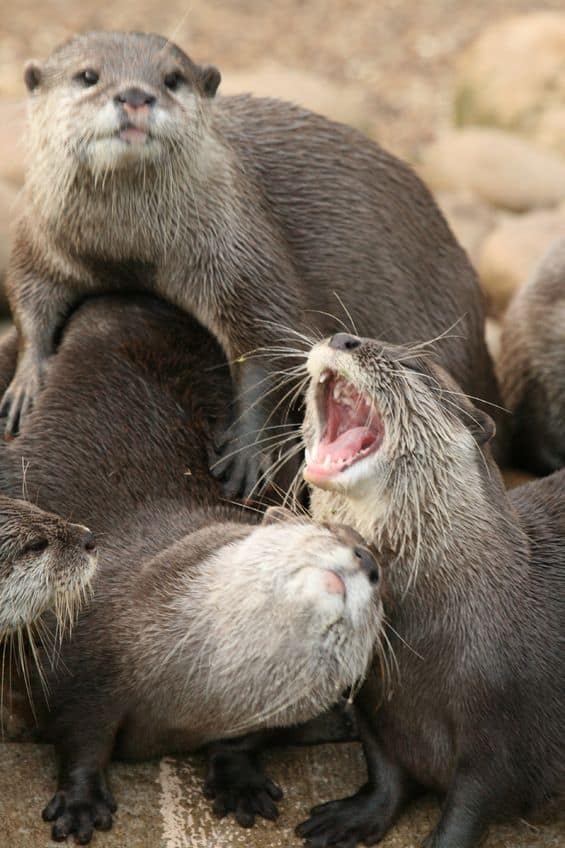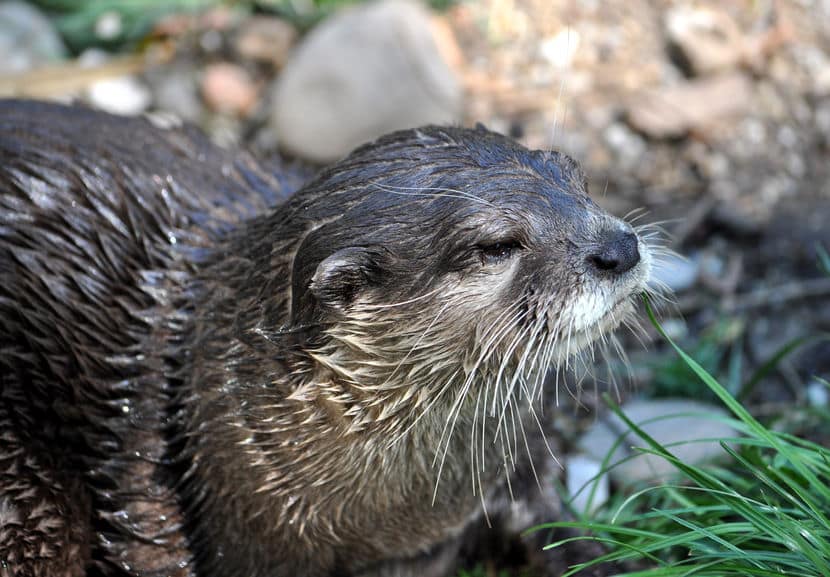The Asian small-clawed otter (Aonyx cinereus) is a wily, adorable representative of the otter family. Commonly found in zoos in several regions, spanning several countries, these sleek little animals lead active lives. Even in captivity, they enjoy playing and trying to coerce their keepers into giving them more fish treats.
These otters are easy to love, with their affectionate personalities. They are also very intelligent. It is easy to see why the act of observing these animals is an enjoyable way to spend the day.
Physical Description
Asian small-clawed otters are also known as Oriental small-clawed, Asian short-clawed, and a few other variations of similar names. They are the smallest otters and weigh up to 11 pounds. They are about two to three feet long. Their tails are responsible for about a foot of that length.
In most cases, these otters have brown fur with a white or gray lower jaw and neck. While this coloration is common in other otter species, it’s particularly pronounced in many of the small-clawed otters. They have tiny, round ears, and a relatively petite snout, both of which contain structures to close off the ears and nose when the otters dive underwater. The Asian small-clawed otter has only partially webbed paws with short claws that aren’t always easy to see. Their facial whiskers help them to locate prey in the water. The way that these whiskers accomplish the task is by alerting the otters to movement in the water. The otters’ whiskers can feel that water movement. They have short legs and arms covered in ample skin to manage what needs to be done in the water and out of it.

Habitat and Conservation Status
Asian small-clawed otters are considered vulnerable. The otters live along riverbanks, lakes, streams, coastlines, and also in rice paddies in Southeast Asia. The major threats that these animals face include humans who hunt them for their fur. There is also the threat of humans trying to exterminate them in rice paddies. And, if the intentional hunting and extermination aren’t enough, there is also the poisoning from agricultural chemicals. Beyond the humans, there is the threat of reptiles, which is also considered a major threat to these small otters.
Zoo habitats usually include rocky areas with some greenery, as well as a pool of water in which the otters may spend their time swimming. Observers may be able to watch the otters sleep in hammocks or play with toys that have been provided to them by their keepers. Many times otters who live in zoos have been harness-trained. When they are trained in this way, they are often seen talking walks about the zoo with their keepers.
Asian small-clawed otters eat small shellfish, fish, and frogs. In zoos, they can quickly become aware that keepers have fish, resulting in the otters begging for food (even if and when they are already well-fed). This act of begging has often been used to entertain onlookers.
Family and Affection
These otters form large families with a primary mother-father pair and multiple litters. In the wild, the group will often disband if a parent dies. The groups are female-dominant and often consist of up to 12 otters. The otters aren’t always one happy family; they have been known to reject a family member in some cases.
Baby otters do not know how to swim when they are born. They have to be taught. The mother grabs the pup (baby otter) by the neck and drags the pup into the water, diving up and down in order to teach the baby how to swim. Male otters can take part. The males do not always take part, but it does happen in raising the young.

The Asian small-clawed otter is also the noisiest otter. This noise, comprised of a range of calls, is used in conjunction with their musky scent in order to communicate. This communication method of noise and smell works well in the otter kingdom.
Otters also get along well with the human keepers, often playing affectionately with the keeper. The otters love sensory input, ranging from playing with stones to playing with electronic keyboards at the Smithsonian’s National Zoo.
The Asian small-clawed otter is an indicator species. What this means is that if the population of otters is doing well in the wild, it is an indicator that other species may also be doing well in the area. However, increasingly smaller regions of wild territories are making it more difficult for the otters to survive. Zoos have stepped in to play an essential role in preserving the otters and allowing humans to study their behavior, in hopes of helping the otters and helping them to thrive.

